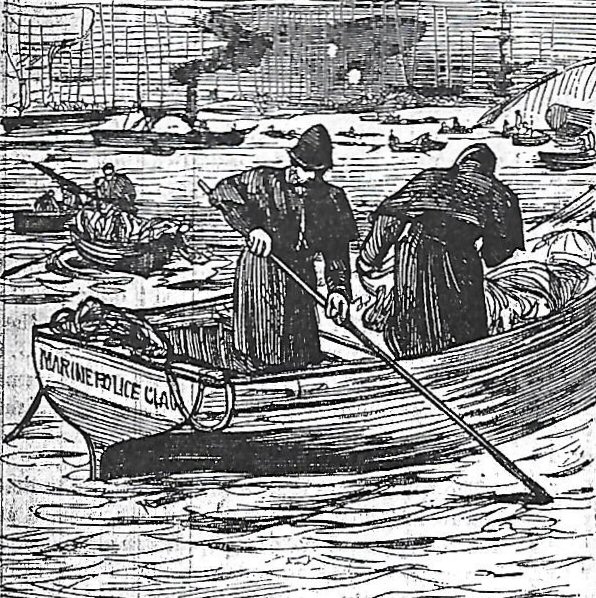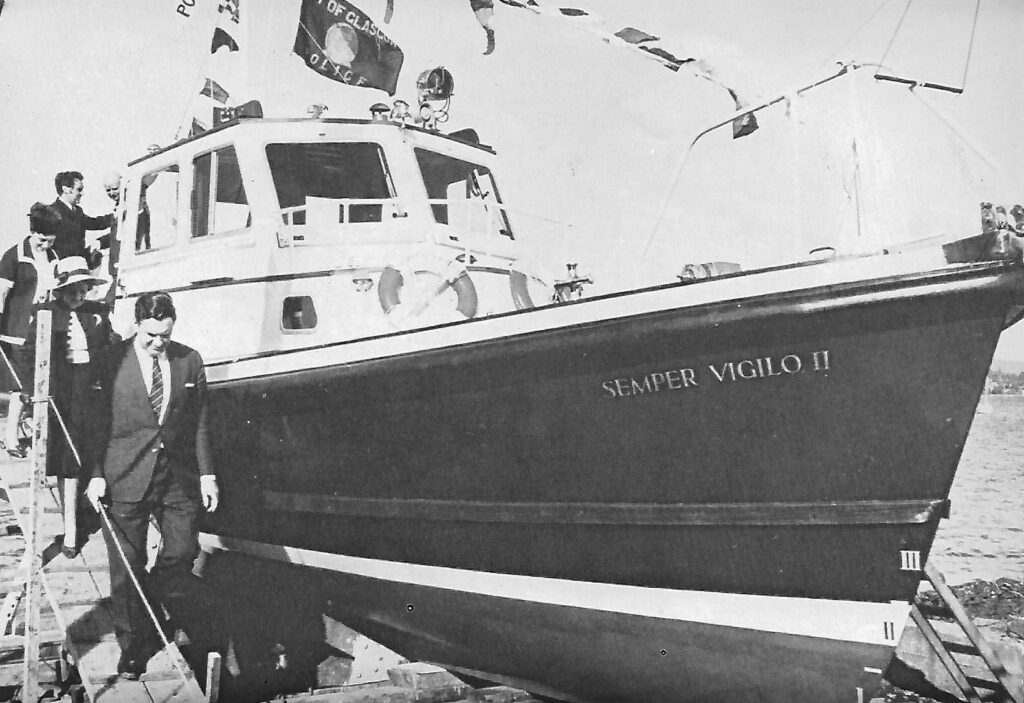The River Clyde has been the main artery of Glasgow and the source of its wealth over the centuries. There is a saying that the ‘Clyde made Glasgow’, but in truth, ‘Glasgow made the Clyde’. In 1662, Glasgow merchants bought land and created an artificial port calling it Port Glasgow, but numerous attempts to open up the river to the City failed. The river had widened and the silt gathered throughout the lower reaches preventing shipping reaching the City.
In 1768, an engineer, John Golborne was able to successfully deepen the river by narrowing the width by building ‘The Lang Dyke’ (still visible today) and building piers projecting from the banking to create turbulence that scoured the river bed and washed the silt away. This deepened the river to eight feet, but in 1854 a bedrock was discovered at Elderslie and the dangerous job of blasting it away took several years and claimed a number of casualties in the workforce. By 1772, shipping was reaching Glasgow and proved particularly convenient for the tobacco merchants importing their valuable commodity.
In 1845, the supervision of the River Clyde passed from the Clyde Navigation Trust to the Glasgow Police and was known as the ‘Clyde Division’.

Rowing Boat at the Daphne Disaster
1883
In 1858, under the Clyde Navigation Consolidation Act, the trustees gained the power to establish a separate Police force, although it was not until 1862, that they established the Clyde Police. This small police force operated from the C.N.T building in Robertson Street.
The Glasgow Police Act of 1866 brought the Clyde Police (87 men) again under the control of the Glasgow Police and it was absorbed into the force as the Marine Division. This division would later occupy a new divisional headquarters in McAlpine Street which also accommodated the Court of the Baillie of the River Clyde which had jurisdiction throughout the Clyde River and Estuary. It also dealt with offenders from ships docking at Glasgow from all over the world and became known locally as ‘The Court of the Seven Seas’.
In 1881, the Glasgow Magistrates authorised the Glasgow Police to buy a rowing boat for £16. Among its many patrol duties, it was used on the river to save people from drowning or recovering their bodies. On 3 July 1883, the new police rowing boat was put into action when the steam coaster ‘Daphne’ capsized three minutes after its launch. Two hundred workmen had remained on board and although 70 survived, 124 men and boys were drowned.

At the start of the First World War in 1914, the Glasgow Sewage Department gave one of their launches to Glasgow Police. It was fitted with a wheelhouse and cabin and became Police Patrol boat ‘No.1’. This launch continued in service until 1938.
In 1938, Police Patrol Boat ‘No. 1’ was decommissioned and a new, purpose-built launch, The ‘Semper Vigilo’, constructed by Robertson’s of Sandbank was commissioned. The replacement of the old launch was just in time for the Second World War when the new launch would prove invaluable.

At the outbreak of the war, ‘Semper Vigilo’ had her wheelhouse and cabin fitted with steel plating to protect her crew from shrapnel, ensuring that she came through the war unscathed. In 1951, when it received its annual refit, it was fitted with two diesel engines which prolonged the life of the launch for another 20 years. Berthed at the quay adjacent to the King George V bridge, the launch served the City of Glasgow until 1971, when it was decommissioned.
In 1970, a new launch, ‘Semper Vigilo II’ was commissioned. It was launched at McGuer’s of Clynder on 16 June 1971 by Lady Robertson, the wife of Glasgow Chief Constable Sir James Robertson. It had a 40 feet long glass fibre hull and twin propellers and came into service on 1 July 1971. Its first official duty was to attend, dressed overall, at the opening of the Erskine Bridge on 2 July 1971.

Its duties included patrolling the river, attending launching ceremonies, ensuring the safety of river traffic and Glasgow citizens until 1975, when police regionalisation took place and it became a resource of Strathclyde Police. The livery of Semper Vigilo II was then changed to include more white and orange on the hull and in 1979 the launch was moved from its berth at Bridge Wharf, next to King George V Bridge, in Glasgow, to a more central location at Greenock Harbour.

In 1992, it was decided. in the face of expensive repair bills, to decommission the launch and pass its responsibilities to the Police Helicopter Unit.
